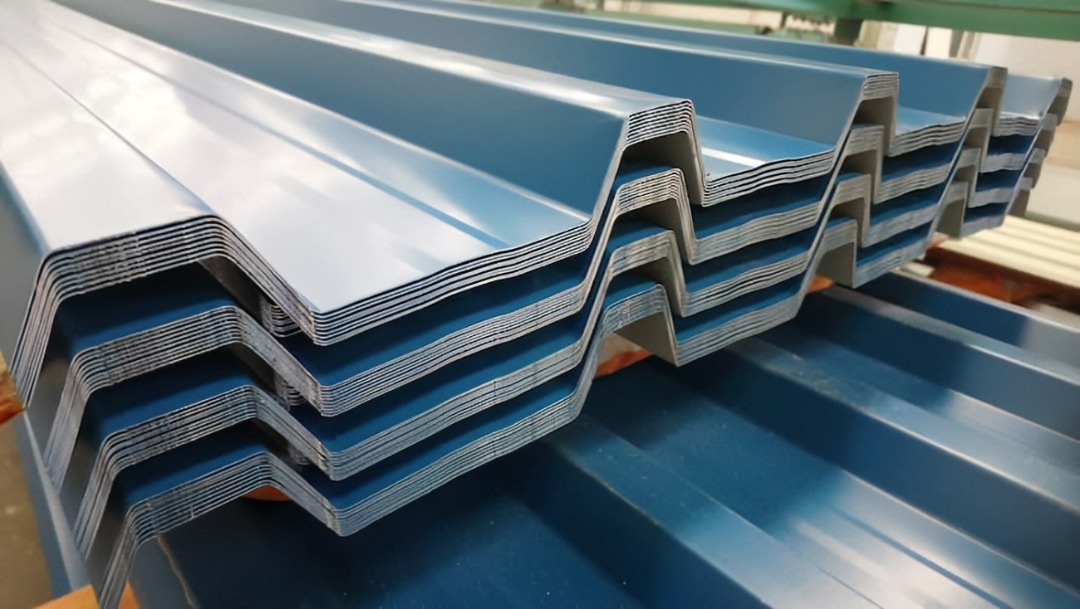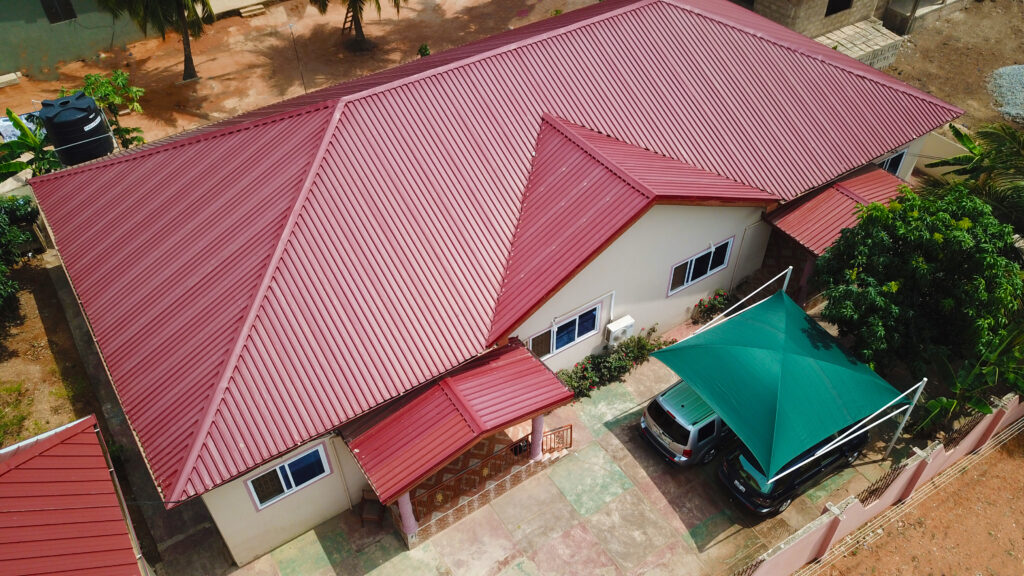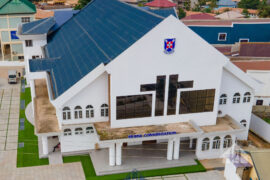Imagine your home as a shield, protecting you from the elements. Now, picture the roof as the crown of that shield, bearing the brunt of Mother Nature’s wrath. In the quest for a reliable and durable roofing solution, IBR roof sheeting emerges as a strong contender. But what exactly is IBR roof sheeting, and what advantages and disadvantages does it offer? How can you ensure a successful installation that will stand the test of time? In this discussion, we will explore the ins and outs, providing you with valuable insights to help you make an informed decision for your roofing needs.
What Is IBR Roof Sheeting?
IBR roof sheeting is a type of roofing material that is commonly used in construction projects due to its durability and weather-resistant properties. It is a popular choice for both residential and commercial buildings. The term “IBR” stands for “Inverted Box Rib,” which refers to the shape of the profile. This type of roofing sheet has a trapezoidal shape with alternating high and low ribs, creating a strong and rigid structure.
It has a wide range of applications. It can be used for both pitched and flat roofs, making it suitable for various architectural designs. The sheeting is designed to provide excellent water drainage, preventing leaks and water damage. It is also resistant to wind and hail, making it suitable for areas prone to severe weather conditions.
When it comes to popular brands of IBR roof sheeting, there are several reputable manufacturers in the market. Some of the well-known brands include Safintra, Macsteel, and Clotan Steel. These brands are known for their high-quality products that meet industry standards and offer long-lasting performance.
Advantages of IBR Roof Sheeting
One of the key advantages of using IBR roof sheeting is its exceptional durability and resistance to various weather conditions. The cost-effectiveness of this type of roof design is also worth noting. The material used in IBR sheets is typically galvanized steel or aluminum, both of which are known for their strength and longevity. This means that your roof will be able to withstand harsh conditions such as heavy rain, strong winds, and even hailstorms without sustaining significant damage.
IBR roof sheeting is designed with a unique profile that enhances its strength and stability. The deep, wide flutes and high ribs provide added rigidity, making it less prone to bending or warping over time. This not only ensures the longevity of your roof but also reduces the need for frequent repairs or replacements, saving you money in the long run.
Furthermore, the installation of IBR roof sheeting is relatively straightforward, making it a cost-effective choice. The sheets are lightweight and easy to handle, which means that the installation process can be completed quickly and efficiently. This not only saves on labor costs but also minimizes disruptions to your daily routine.
Disadvantages of IBR Roof Sheeting
While IBR roof sheeting offers numerous advantages in terms of durability, resistance to weather conditions, and cost-effectiveness, it is important to also consider the potential disadvantages of this roofing material. One of the main disadvantages is its susceptibility to condensation. Due to the metal construction and the lack of proper insulation, condensation can occur on the underside of the sheets, leading to the formation of water droplets. This can result in moisture-related issues such as mold and rot, which can compromise the structural integrity of the roof. Additionally, thry can be noisy during heavy rainfall or hailstorms, as the metal material amplifies the sound. This can be disruptive and uncomfortable, especially in residential settings. Furthermore, this type of roof design is not suitable for roofs with low slopes, as it has a minimum recommended pitch requirement of 5 degrees. In such cases, alternative roofing materials like corrugated iron or tile may be more appropriate. Overall, while IBR roof sheeting has many advantages, it is important to consider these potential disadvantages and explore alternative options when necessary.
Guidelines for Installing IBR Roof Sheeting
To ensure a successful installation, it is crucial to follow these precise and detailed guidelines. First and foremost, it is important to have the proper tools for installing IBR roof sheeting. These include a cordless drill with a suitable screwdriver bit, a metal cutting saw, a measuring tape, a chalk line, and safety equipment such as gloves and goggles.
One common mistake to avoid when installing IBR roof sheeting is not properly aligning the sheets. It is essential to ensure that each sheet is aligned correctly with the previous one, as even a slight misalignment can lead to water leakage and structural issues. Another mistake to avoid is over-tightening the screws. While it is important to secure the sheets firmly, excessive tightening can cause damage to the sheets and compromise their integrity.
Additionally, it is important to follow the manufacturer’s instructions regarding the overlap and positioning of the sheets. This will ensure that the sheets are installed correctly and provide optimal protection against the elements.
Maintenance Tips for IBR Roof Sheeting
For proper maintenance of your IBR roof sheeting, it is essential to follow these precise guidelines. Regular roof cleaning is crucial to ensure the longevity and performance of your IBR roof sheeting. Start by removing any debris, leaves, or branches that may have accumulated on the surface. Use a soft-bristle broom or a leaf blower to gently sweep away the dirt and debris. Avoid using high-pressure water sprayers as they can damage the coating and protective layers of the sheeting.
Preventive measures are also important to maintain the integrity of your IBR roof sheeting. Trim overhanging tree branches to prevent them from scratching or damaging the surface. Inspect the sheeting regularly for any signs of damage, such as cracks, rust, or loose screws. If you notice any issues, address them promptly to prevent further damage. Additionally, ensure that gutters and downspouts are clear of debris to prevent water buildup and potential leaks.
Frequently Asked Questions
Can IBR Roof Sheeting Be Used on Curved Roofs?
Yes, IBR roof sheeting can be used on curved roofs. When using IBR roof sheeting on different types of roofs, it’s important to consider the pros and cons. The advantage of using IBR roof sheeting on curved roofs is that it provides a sleek and modern appearance. However, the disadvantage is that installation can be more challenging and may require additional expertise and resources. Overall, using IBR roof sheeting on curved roofs can be a viable option, but careful planning and proper installation are crucial.
Is IBR Roof Sheeting Suitable for High Wind Areas?
In high wind areas, IBR roof sheeting may not be the most suitable option. It is important to consider the specific requirements of coastal areas when choosing roofing materials. IBR roof sheeting may not provide enough resistance against strong winds compared to corrugated roofing. Therefore, it is recommended to consult with a professional to determine the best roofing solution for high wind areas, taking into account factors such as the location and climate conditions.
How Long Does IBR Roof Sheeting Typically Last Before Needing Replacement?
IBR roof sheeting typically lasts for a long time before needing replacement, depending on several factors. The longevity of IBR roof sheeting is influenced by factors such as the quality of the material, installation techniques, and maintenance. Proper installation is crucial to ensure the longevity of the sheeting. Regular inspections and maintenance can also help extend its lifespan. It is important to consider these factors when assessing the lifespan of IBR roof sheeting.
Can IBR Roof Sheeting Be Painted to Match the Color of the House?
Yes, you can paint IBR roof sheeting to match the color of your house. However, there are some factors to consider. Firstly, make sure to use a paint that is suitable for metal surfaces and can withstand extreme temperatures. Additionally, take into account the lifespan of the roof sheeting and the potential need for replacement in the future. It is also important to follow proper installation precautions, especially in curved roofs or high wind areas, to ensure the longevity and performance of the painted roof sheeting.
Are There Any Special Precautions to Take When Installing IBR Roof Sheeting in Areas With Extreme Temperatures?
When installing IBR roof sheeting in areas with extreme temperatures, there are several precautions you should take. Firstly, ensure that the sheeting is properly acclimatized to the temperature before installation. This will prevent any warping or cracking. Secondly, use fasteners that are designed to withstand extreme temperature fluctuations. Finally, consider adding additional insulation to regulate the temperature underneath the roof. Following these best practices will help ensure the durability and performance of your IBR roof sheeting in extreme temperature areas.
Conclusion
In conclusion, IBR roof sheeting offers numerous advantages such as durability, weather resistance, and easy installation. However, it also has some disadvantages like its relatively high cost and limited color options. When installing IBR roof sheeting, it is important to follow guidelines to ensure proper installation and optimal performance. Additionally, regular maintenance is necessary to prolong the lifespan of the sheeting. Overall, IBR roof sheeting is a reliable choice for roofing projects, providing long-lasting protection for structures.
Discover more from Ghana Scoop
Subscribe to get the latest posts sent to your email.





